Fine-Feathered Illusion
How Jacques Vesery turns and carves his textured creations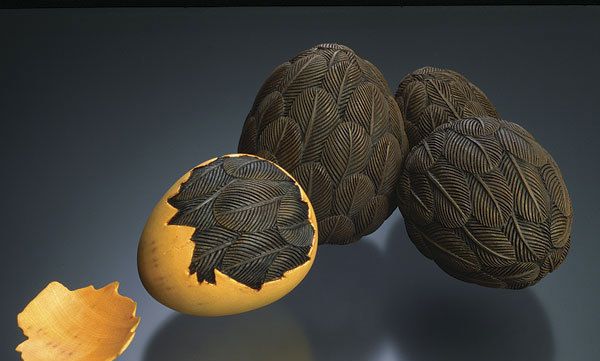
Jacques Vesery’s work combines turning with carving to produce astounding texture and detail. Vesery uses a burning tool for the detail work, which gives him a tiny, crisply cut line, impervious to changes in grain direction. He then applies five layers of acrylic paint to the feathers, starting with black and working up to light browns. He leaves the shell unfinished but for a coat of wax.
1. Turn the egg and shell
From the same piece of wood (to ensure grain and color continuity), Vesery begins by turning a complete egg and a partial one, which he uses to make the broken shell. After turning the partial egg, he turns and sands the full egg until it is as close to finished as possible, then parts it off.
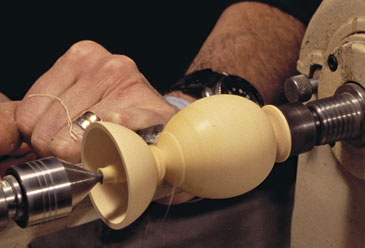
2. Crack the egg
Using a flexible-shaft, rotary-carving tool, Vesery removes wood inside the jagged “window” in the eggshell to a depth of about 1/16 in. To do the cutting, he uses a tapered burr. To achieve the control required for fine work, whether grinding or burning, Vesery holds the tool as close to the business end as possible—“like a pen or a paint brush.” After relieving the area within the window, Vesery uses the grinder to establish the outlines and domed shapes of each feather.

3. Fluff the feathers
For the detailed carving, Vesery uses a short-tipped, fine-point, wood-burning tool that enables him to achieve a cut line rather than a torn one. Since clamping the work doesn’t allow him to move the piece, his left hand serves as a vise and he steadies his right hand by resting the last two fingers against the workpiece. He doesn’t just move the tool hand; the vise hand is always in motion, too, creating a fluid two-part movement.
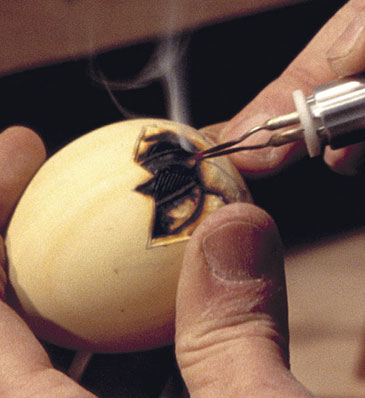
4. Shape the shell
Vesery turns the walls of the partial egg to a thickness of about 1/8 in.—if he were to go much thinner, the piece would break apart while he worked it. He turns the broken piece of shell thicker at the center and thinner at the edges, which “creates the illusion of thinness without the vulnerability.”
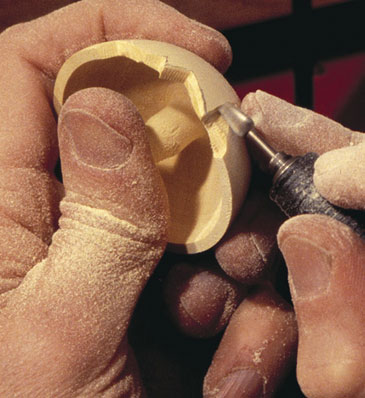
Vesery cuts out the jagged shape of the broken shell by grinding to a pencil line. To create the illusion that the piece really is eggshell-thin, Vesery grinds away more wood along the jagged perimeter, carefully removing material to create a gradual taper and a shell-thin edge.
From Fine Woodworking #192
Photos: Jon Binzen












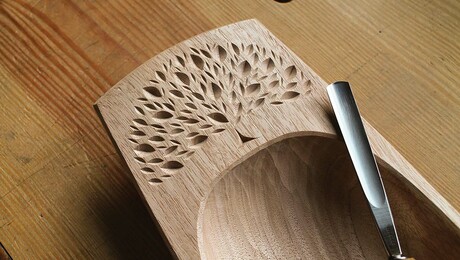









Log in or create an account to post a comment.
Sign up Log in